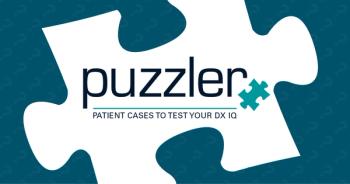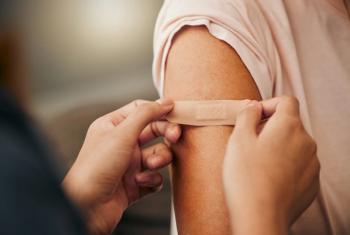
- November/December 2025
- Volume 41
- Issue 8
The rise of electric scooter injuries: What the general pediatrician needs to know
Pediatric e-scooter injuries are surging as popularity rises, highlighting the need for increased awareness and safety measures to protect young riders.
Electric scooters (e-scooters) are a popular means of recreational activity and transportation. Their use has grown exponentially during the past decade, particularly among pediatric operators. However, the increasing popularity of e-scooters has led to a rise in related injuries among pediatric patients.1-4 It is important for medical providers to understand the risks associated with these electronic motorized devices, as well as possible preventive measures.
A study of the National Electronic Injury Surveillance System (NEISS) demonstrated a dramatic increase in age-adjusted e-scooter injury incidence between 2017 and 2018, from 6 to 19 per 100,000; this represented an increase of 222%.1 Injuries to patients younger than 18 years accounted for approximately 33% to 41% of those injuries annually during this time frame.1 Interestingly, this period correlated with e-scooter expansion into the ride-sharing space in 2017.
A similar study evaluated the NEISS for pediatric e-scooter injuries in children aged 0 to 18 years from 2015 to 2019. Of the 902 patients identified, 5.2% required hospital admission.3 The average age of admitted patients in this population was 11.3 years, and an overwhelming majority were males (72.3%).3 Patients with polytrauma were more likely to be older than riders with single injuries.3 Head and facial trauma accounted for 39.3% of injuries, which is comparable to adult cohorts.3,5-7 The most common craniofacial injuries involving e-scooters are nasal fractures, followed by orbital wall and zygomaticomaxillary complex fractures.8 A study of dental trauma in children and adults demonstrated that crown-root fractures and avulsions occurred at a significantly higher rate in accidents involving e-scooters compared with other etiologies of trauma.9 These types of dental injuries are characterized by challenging treatment protocols and a worse prognosis.10,11
Perhaps unsurprisingly, children experience a greater rate of fractures from e-scooters compared with adults.2 Along with the nasal bone, the tibia and radius are the most involved bones in fractures.12 Elbow, wrist, and hand injuries are more common than shoulder girdle or diaphyseal fractures.13,14 Injuries to the lower extremities are less common than those to the upper extremities and are thought to be caused by the rider’s reflex to get off the electric scooter during a fall.13,15,16
When comparing the injury patterns of children and adolescents riding e-scooters and nonelectric scooters, adolescent e-scooter riders were significantly more likely to be involved in traffic accidents and to experience severe head injuries necessitating surgical intervention.2 Further, adolescent e-scooter riders were at a higher risk of being involved in a potentially life-threatening traffic accident compared with nonelectric scooter riders.2 The majority of pediatric e-scooter injuries are attributed to falls (78%), whereas motor vehicle collisions account for 13%.4 The increase in serious injuries from e-scooters compared with their nonmotorized counterparts may be due, in part, to higher speeds reached on an e-scooter. Most e-scooters are classified as low-speed electric vehicles at the federal level and thus should not exceed a maximum speed of 20 mph and are allowed on roads only if they have an electric motor of 750 W or lower.17 In comparison, the average speed for the casual rider of a nonelectric scooter is 5 to 10 mph.18 Younger e-scooter users may lack the road experience and developmental maturity to operate these devices safely, particularly when accounting for the increased speed.4
It is possible that consistent regulations of e-scooters could prevent some injuries. Currently, there is no single nationwide e-scooter minimum age requirement, with age requirements varying from 8 years (Utah) to 18 years (Arizona).17 The majority of states set a minimum age between 14 and 18 years for the use of an e-scooter. However, some states have no related law.17 Similarly, other e-scooter safety regulations, such as speed limit, helmet use, and licensing, vary by state and city ordinances.17 Helmet noncompliance among the pediatric population has been quoted to be as high as 42% to 97%.4,19 Increased use of helmets and other protective equipment represents a key target for public awareness and education. Furthermore, legislative restrictions on e-scooter use, such as speed limits and nighttime riding bans, have been associated with a reduction in injuries.20,21
The medical community must continue to raise awareness of the frequency and severity of e-scooter injuries in the pediatric age group, as well as to advocate for restrictions to protect this vulnerable population. The World Health Organization recommends improving the quality and quantity of data on morbidity and outcomes of children’s injuries to target investments in injury prevention efforts.2,22 Ongoing research to better characterize the incidence of pediatric e-scooter injuries, injury patterns, and their impact on health care resources is essential to keep children safe as this mode of transportation increases in popularity.
References
- Namiri NK, Lui H, Tangney T, Allen IE, Cohen AJ, Breyer BN. Electric scooter injuries and hospital admissions in the United States, 2014-2018. JAMA Surg. 2020;155(4):357-359. doi:10.1001/jamasurg.2019.5423
- Schuller A, Hohensteiner A, Sator T, et al. Paediatric e-scooter riders at high risk of life-threatening traffic accidents. Pediatr Res. 2025;97(6):1929-1934. doi:10.1038/s41390-024-03667-6
- Cohen LL, Geller JS, Yang BW, Allegra PR, Dodds SD. Pediatric injuries related to electric scooter use: a national database review. J Pediatr Orthop B. 2022;31(2):e241-e245. doi:10.1097/BPB.0000000000000879
- Clanfield M, Sharman I. Breaking bones and the rules: an audit of paediatric e-scooter trauma in a regional Queensland hospital. Aust N Z J Public Health. 2025;49(3):100245. doi:10.1016/j.anzjph.2025.100245
- Aizpuru M, Farley KX, Rojas JC, Crawford RS, Moore TJ Jr, Wagner ER. Motorized scooter injuries in the era of scooter-shares: a review of the national electronic surveillance system. Am J Emerg Med. 2019;37(6):1133-1138. doi:10.1016/j.ajem.2019.03.049
- Trivedi TK, Liu C, Antonio ALM, et al. Injuries associated with standing electric scooter use. JAMA Netw Open. 2019;2(1):e187381. doi:10.1001/jamanetworkopen.2018.7381
- Badeau A, Carman C, Newman M, Steenblik J, Carlson M, Madsen T. Emergency department visits for electric scooter-related injuries after introduction of an urban rental program. Am J Emerg Med. 2019;37(8):1531-1533. doi:10.1016/j.ajem.2019.05.003
- Akalin BE, Alten A, Gündeş E. Electric scooter-related craniofacial injuries. J Craniofac Surg. 2023;34(8):2328-2331. doi:10.1097/SCS.0000000000009660
- Kwon Y, Lim J, Lee C. Analysis of dental traumatic patterns in standing electric scooter-related accidents. Injury. 2024;55(2):111148. doi:10.1016/j.injury.2023.111148
- Bourguignon C, Cohenca N, Lauridsen E, et al. International Association of Dental Traumatology guidelines for the management of traumatic dental injuries: 1. Fractures and luxations. Dent Traumatol. 2020;36(4):314-330. doi:10.1111/edt.12578
- Fouad AF, Abbott PV, Tsilingaridis G, et al. International Association of Dental Traumatology guidelines for the management of traumatic dental injuries: 2. Avulsion of permanent teeth. Dent Traumatol. 2020;36(4):331-342. doi:10.1111/edt.12573
- Leone E, Ferrari R, Trinci M, Cingolani E, Galluzzo M. Imaging features of electric scooter trauma: what an emergency radiologist needs to know. Radiol Med. 2022;127(8):872-880. doi:10.1007/s11547-022-01519-z
- English KC, Allen JR, Rix K, et al. The characteristics of dockless electric rental scooter-related injuries in a large U.S. city. Traffic Inj Prev. 2020;21(7):476-481. doi:10.1080/15389588.2020.1804059
- Störmann P, Klug A, Nau C, et al. Characteristics and injury patterns in electric-scooter related accidents-a prospective two-center report from Germany. J Clin Med. 2020;9(5):1569. doi:10.3390/jcm9051569
- Choron RL, Sakran JV. The integration of electric scooters: useful technology or public health problem? Am J Public Health. 2019;109(4):555-556. doi:10.2105/AJPH.2019.304955
- Toofany M, Mohsenian S, Shum LK, Chan H, Brubacher JR. Injury patterns and circumstances associated with electric scooter collisions: a scoping review. Inj Prev. 2021;27(5):490-499. doi:10.1136/injuryprev-2020-044085
- Apollo Scooters USA. Electric scooter laws 2024: what you need to know about regulations by state. Apollo Scooters. February 15, 2004. Accessed September 22, 2025. https://apolloscooters.co/blogs/news/electric-scooter-laws-2024-what-you-need-to-know-about-regulations-by-state
- Unlocking the speed potential: how fast can a non-electric scooter go? Levy Electric. Accessed September 22, 2025. https://www.levyelectric.com/resources/unlocking-the-speed-potential%3A-how-fast-can-a-non-electric-scooter-go%3F
- McGalliard R, Hallam K, Townley S, Messahel S, Durand CL. Two-year paediatric trauma centre analysis of electric scooter injuries. Arch Dis Child. 2022;107(11):1061-1062. doi:10.1136/archdischild-2022-324213
- Dibaj S, Vosough S, Kazemzadeh K, O’Hern S, Mladenović MN. An exploration of e-scooter injuries and severity: impact of restriction policies in Helsinki, Finland. J Safety Res. 2024;91:271-282. doi:10.1016/j.jsr.2024.09.006
- Snäll J, Vasara H, Murros OJ, Harjola VP, Castrén M, Puolakkainen T. Changes in e-scooter related maxillofacial injuries following legislative measures in Helsinki, Finland. Sci Rep. 2025;15(1):9720. doi:10.1038/s41598-025-94602-0
- Sethi D, World Health Organization. European Report on Child Injury Prevention. 1st ed. World Health Organization; 2008.
Articles in this issue
29 days ago
EC prescribing has not changed post Dobbsabout 1 month ago
Artificial sweeteners show mixed effects on diabetes managementabout 1 month ago
Novel therapies for type 1 diabetesabout 1 month ago
Bridging the gaps in pediatric diabetes care and awarenessabout 1 month ago
A teenage girl with acne lesions on her foreheadNewsletter
Access practical, evidence-based guidance to support better care for our youngest patients. Join our email list for the latest clinical updates.










